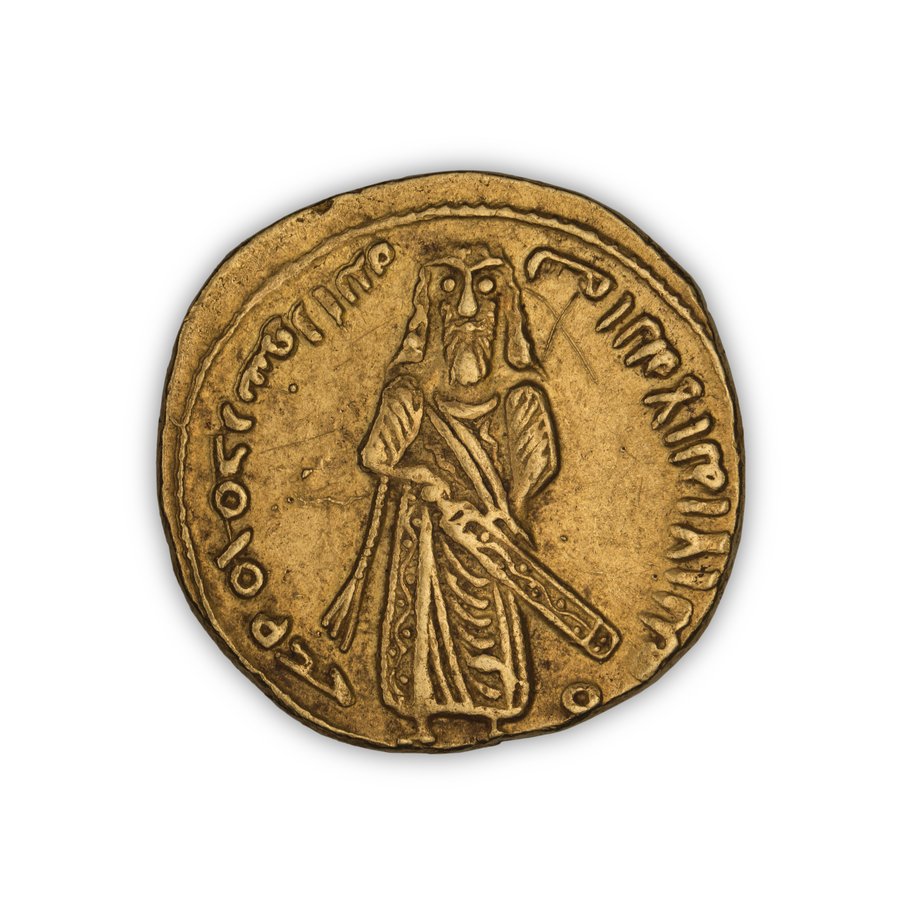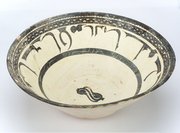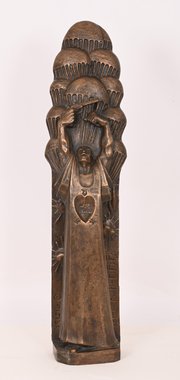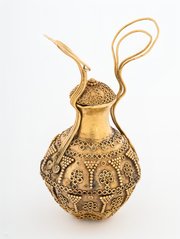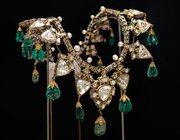
‘Standing Caliph’ dinar
Museum of Islamic Art
- Title:
- ‘Standing Caliph’ dinar
- Caliph:
- Abd al-Malik ibn Marwan, Abd al-Malik i.
- Production place:
- Near East
- Date:
- 695
- Period:
- Umayyad
- Title:
- ‘Standing Caliph’ dinar
- Caliph:
- Abd al-Malik ibn Marwan, Abd al-Malik i.
- Production place:
- Near East
- Date:
- 695
- Period:
- Umayyad
- Material:
- Gold
- Technique:
- Minting
- Dimensions:
- 0.09 cm
- Diameter:
- 1.8 cm
Circulating and used on a daily basis, coins are the earliest testimonies of the foundation of Islamic states and the development of trade. Muslim rulers first used Byzantine gold coins (solidus), which was the most common currency still in use in the early years of Islam but also used them as models to mint new coinage between 60 and 73 AH/ 679 and 692 CE. In 74 AH/693 CE, the Umayyad caliph ‘Abd al-Malik b. Marwan (r. 65-86 AH/685-705 CE) established a new currency that would mark his independence towards the Byzantines. On this dinar, dated 76 AH (695 CE), the obverse shows the caliph, standing on his own and holding his sword, thus replacing the image of the Byzantine emperor with his sons represented in earlier coins. This ‘Standing Caliph’ coin was used only for a short period of time, between 74 and 77 AH/693 and 696 CE, before ‘Abd al-Malik ordered a reform to remove any form of iconography on coinage. This reform introduced for the following centuries new conventions with a standardized type of coinage that would include the denomination, the date and sometimes the place of issue, alongside religious inscriptions that spanned from the kalima to the later shahada and Qur’anic verses.
